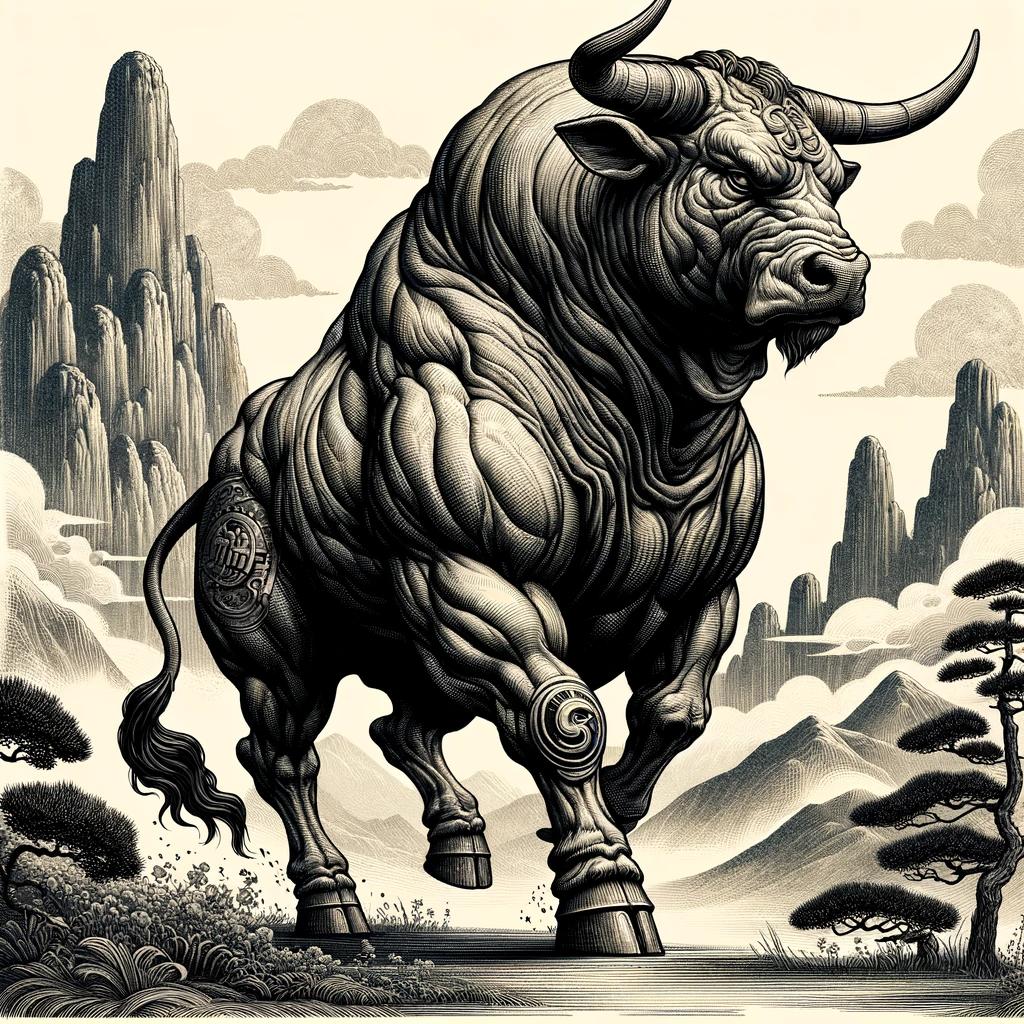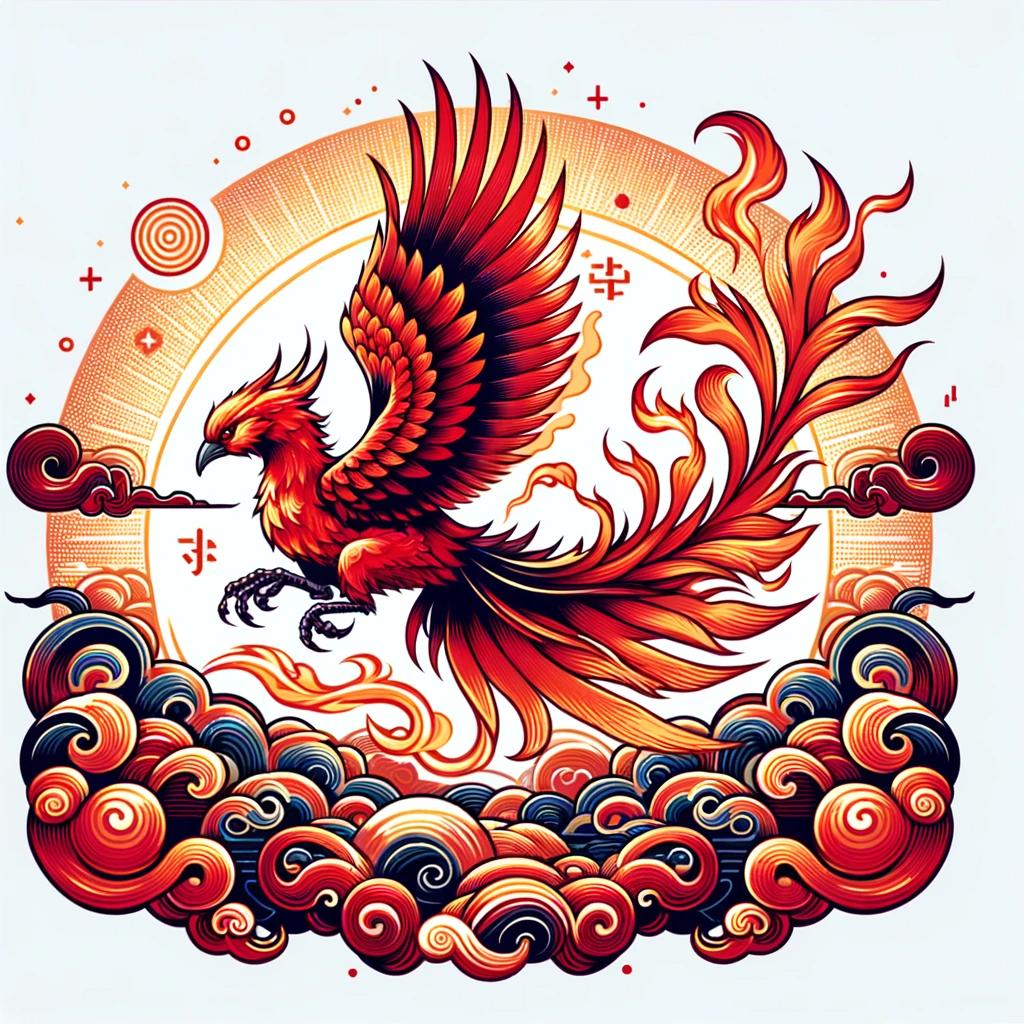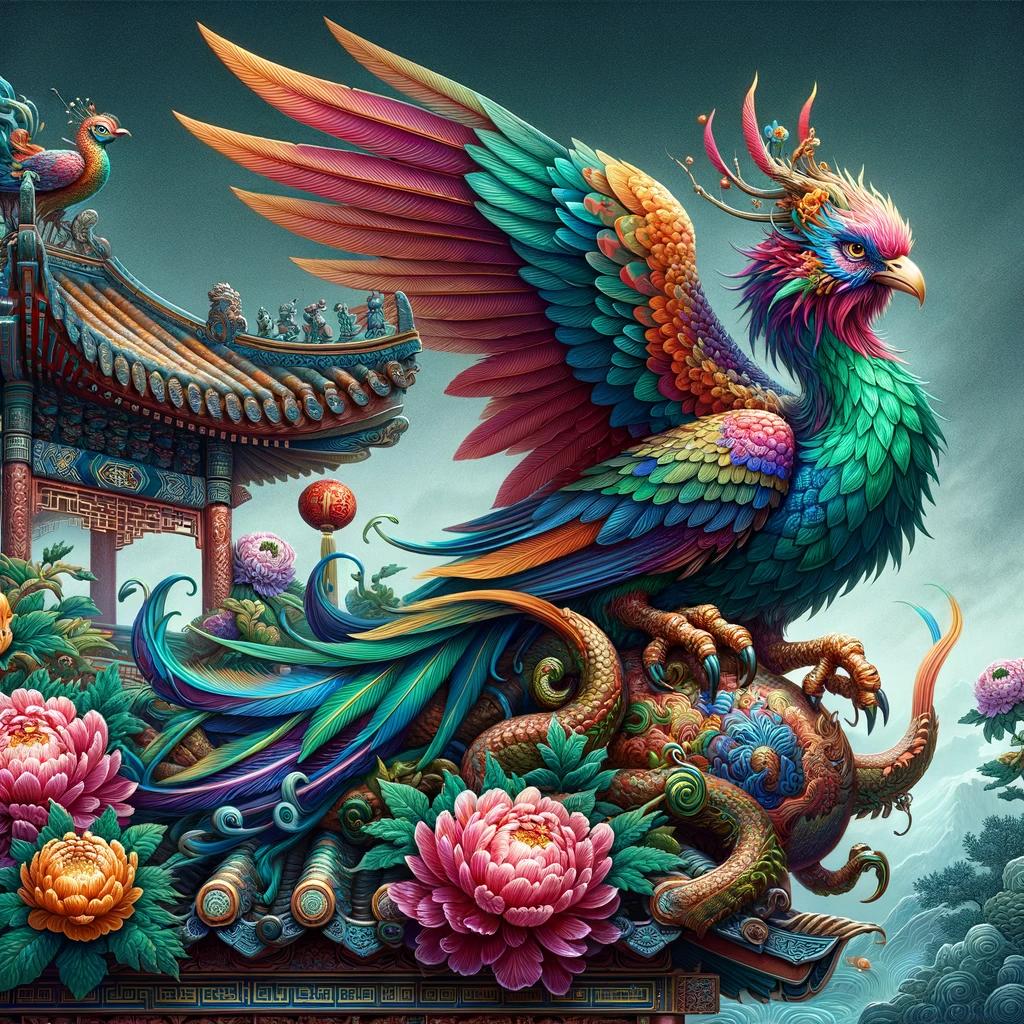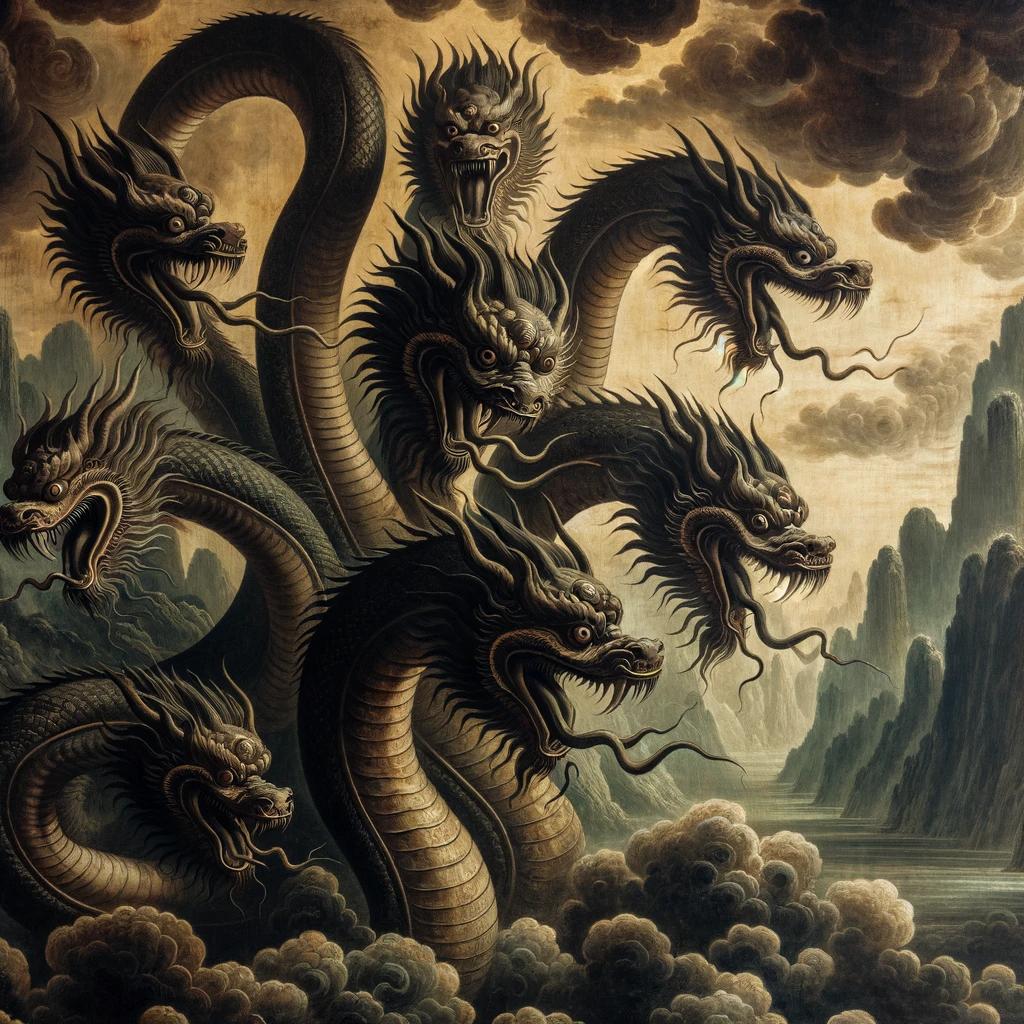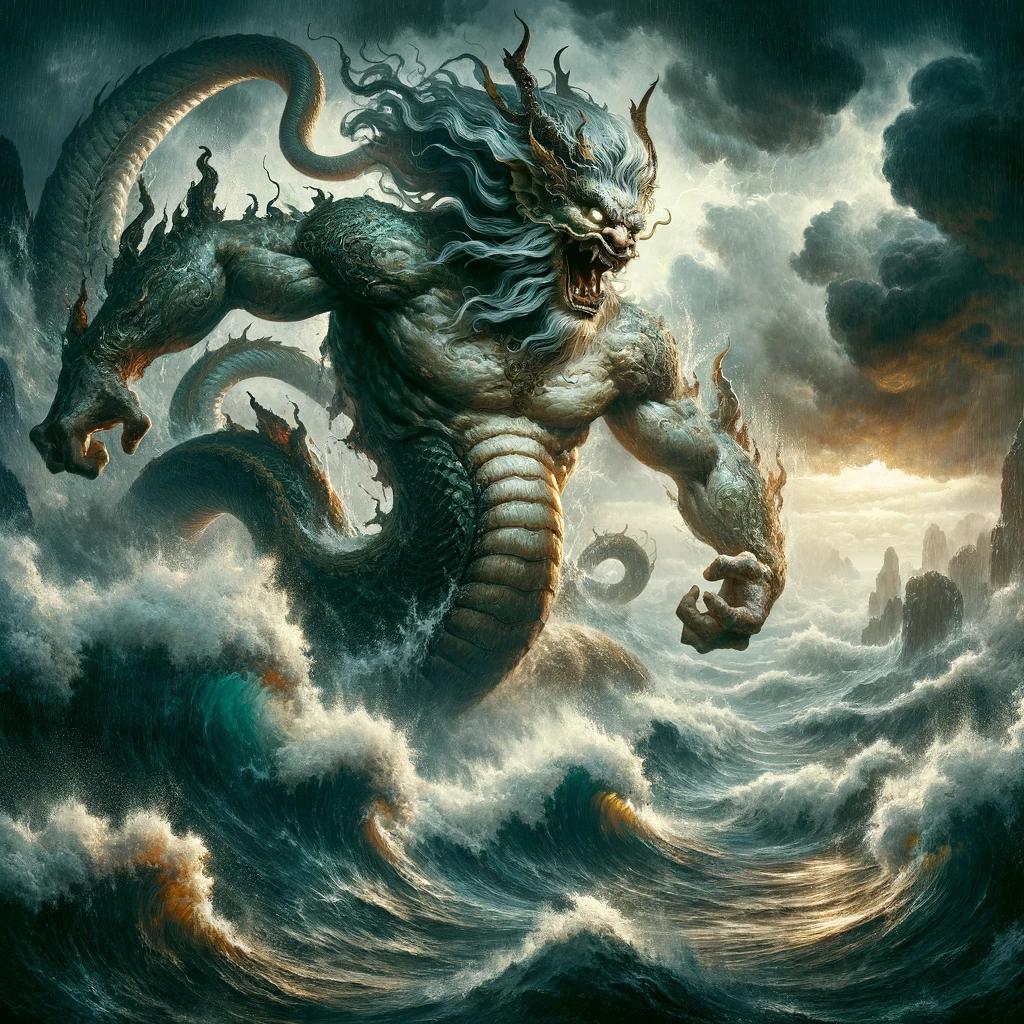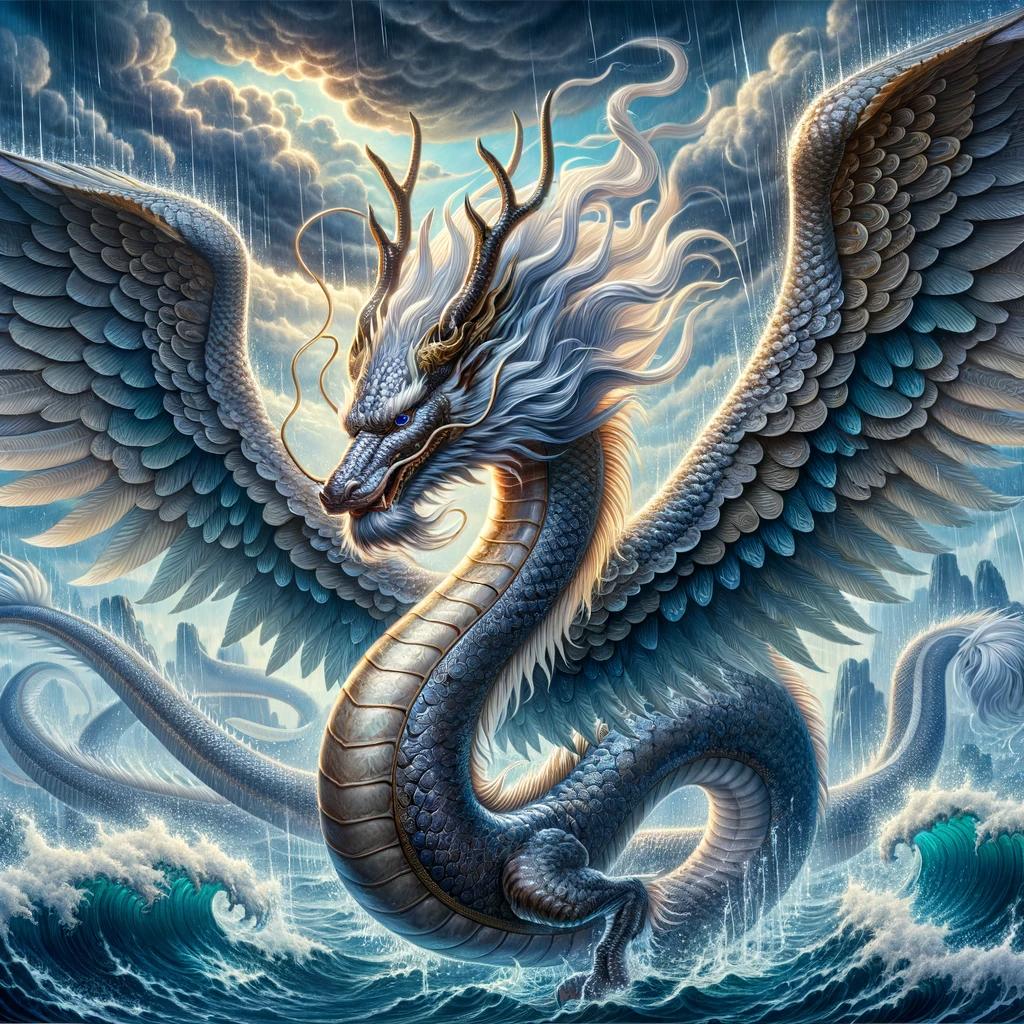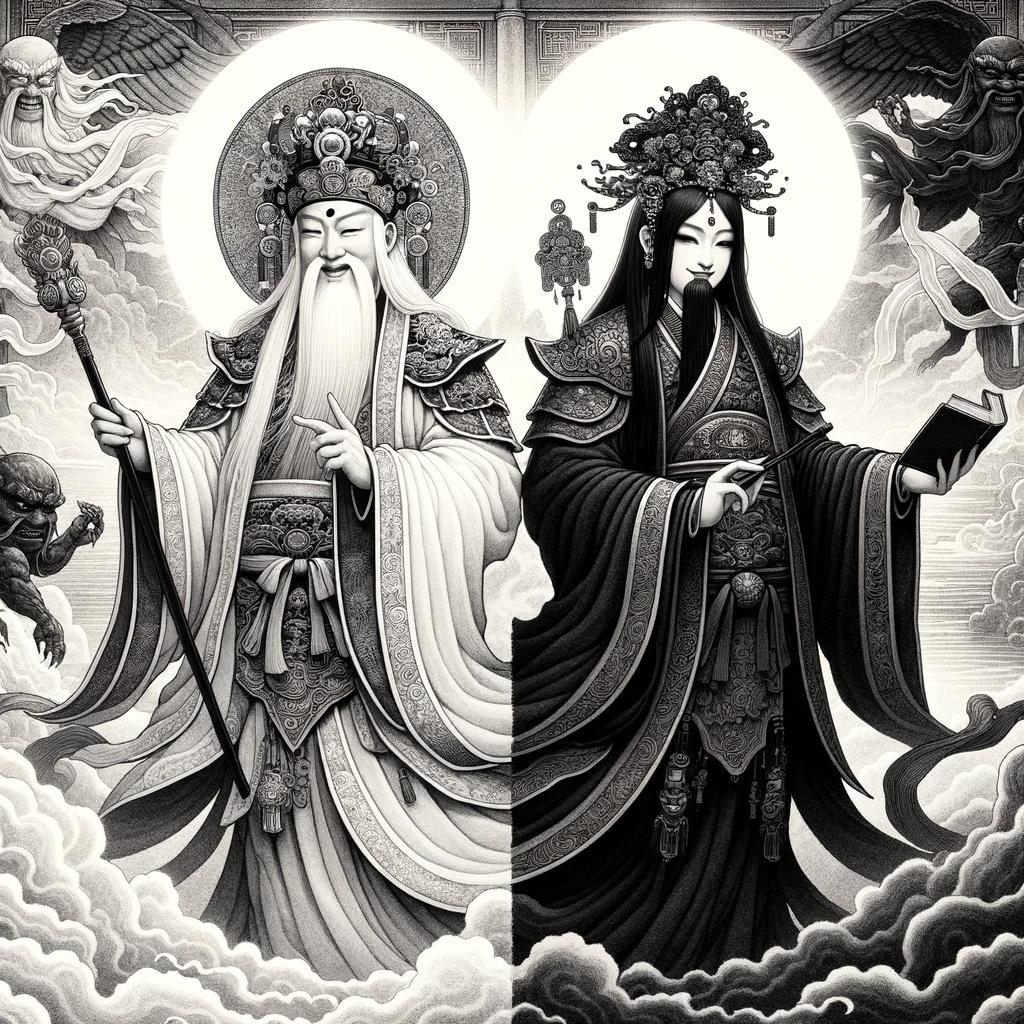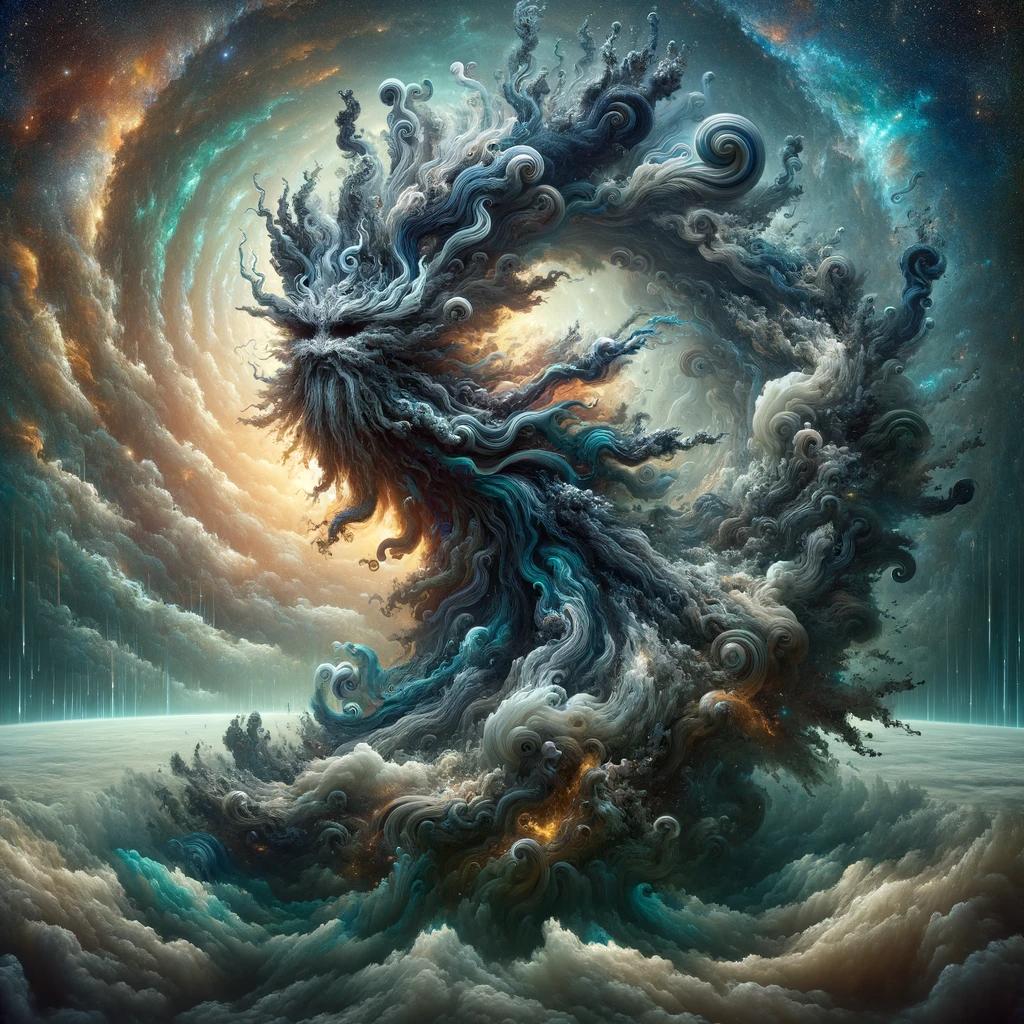‘Mogwai Chinese Culture: Unveiling the Hidden Meanings and Origins’
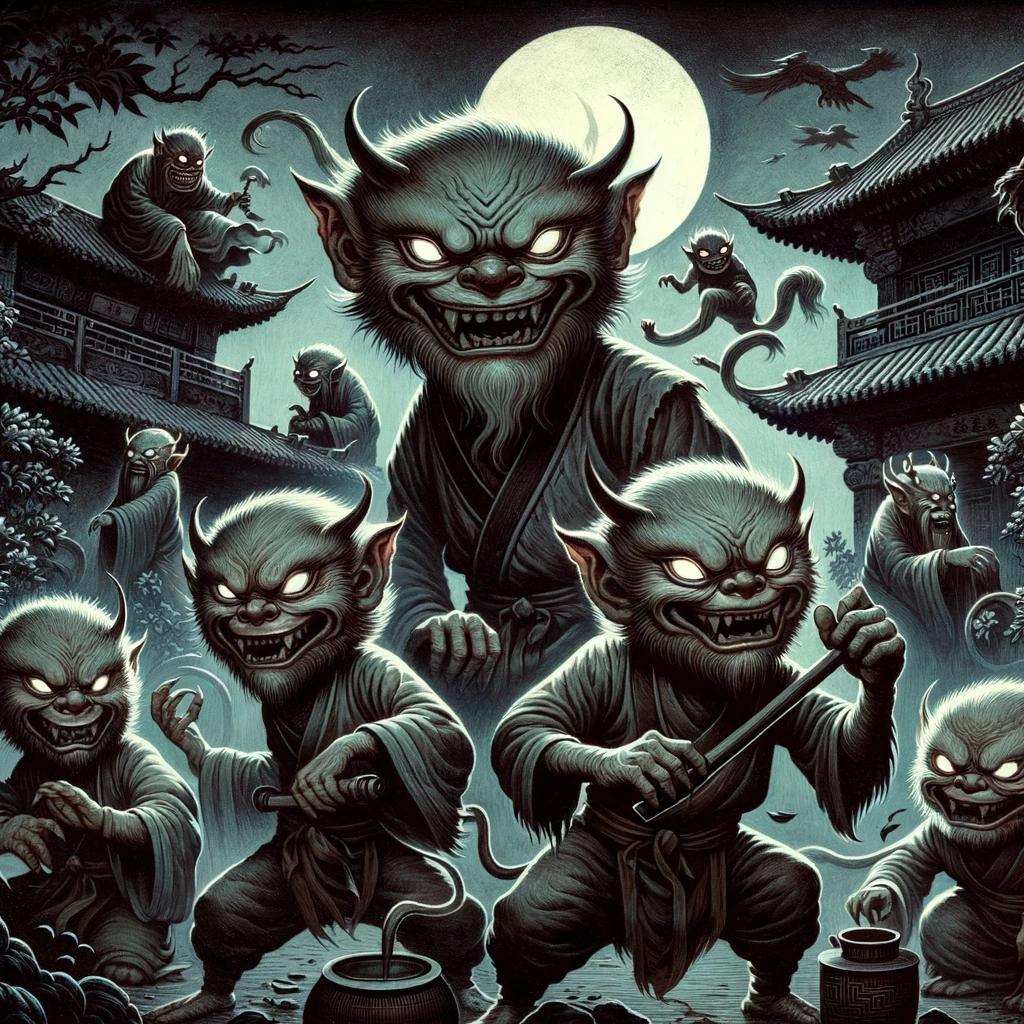
Mogwai Chinese culture holds fascinating hidden meanings intertwined with both Chinese and Greek influences. The term “Mogwai” refers to demons or malicious spirits in Mandarin and cantonese. These terms trace their etymology directly to Sanskrit, reflecting the cultural exchange facilitated by Buddhism’s transmission to China.
Moreover, Mogwai has found its way into popular culture and media, notably the iconic movie “Gremlins.” Delving into Chinese mythology, language, folklore, and contemporary society, this article explores the multifaceted significance of Mogwai in Chinese culture.
The Origins and Meanings of the Term Mogwai
The term “Mogwai” holds a significant place in Chinese culture, carrying hidden meanings that are interconnected with both Chinese and Greek terminology. In Mandarin, 魔鬼 (mó guǐ) refers to a “demon” or “evil spirit,” while in Cantonese, 魔怪 (mó guài) can be translated as a “demonic spirit” or “strange creature.”
These terms, although similar in meaning, differ in the characters used to describe the creature.
The Chinese terms 魔怪 (móguài) and 魔鬼 (móguǐ) have a direct connection to the Sanskrit language through their etymology and the influence of Sanskrit on Chinese language and culture.
The character 魔 (mó) in both terms derives from the Sanskrit term ‘मार māra,’ which means “evil beings” or “demons.” The character 鬼 (guǐ) in 魔鬼 (móguǐ) originally meant “ghost” but evolved to represent vengeful spirits.
This reflects the cultural exchange facilitated by the transmission of Buddhist teachings from India to China, with Sanskrit-derived concepts adapting to Chinese language and thought.
The connection between the Greek term “Diabolos” and the Chinese term Mogwai is also relevant.
In the translation of biblical texts into Chinese, “satanás” and “diabolos” are often translated as “mogui.” The definition of diabolos, which can mean “slanderer” or “accuser,” resembles the meaning of Mogwai in Chinese culture, as both entities are considered forces that can tempt people to do evil things.
In Chinese mythology, Mogwai are regarded as mischievous and malevolent demons that can harm people. During their mating and rainy season, their nature changes, and they can cause chaos, misfortune, or illness.
Furthermore, in modern Chinese culture, Mogwai can refer to deceased spirits or simply as the spirits or souls of unfamiliar people who will seek revenge on the living humans who caused them pain when they were alive.
The term Mogwai has gained popularity through various media forms and has been depicted in movies, books, and comics, making them recognizable icons in popular culture. The classic 1984 film ‘Gremlins’ is the most prominent example of how these creatures have had a lasting impact on popular culture.
In the movie, Mogwai are initially portrayed as small, furry, and innocent creatures that transform into Gremlins when fed after midnight, causing chaos and terror.
In conclusion, Mogwai in Chinese culture possess deep meanings connected to Sanskrit and Greek traditions.
They are seen as mischievous and malevolent demons in Chinese mythology, and their portrayal in popular films like ‘Gremlins’ has led to their recognition in popular culture. It is also important to consider the symbolism of rain in relation to Mogwai, as they are perceived in Chinese culture as tricky and malevolent creatures.
Connections between Mogwai and Chinese Mythology
In Chinese mythology, the concept of Mogwai has deep-rooted connections and associations. These connections can be traced back to ancient beliefs and folklore, where Mogwai were considered mischievous and malevolent creatures capable of causing harm to humans.
According to legends, Mogwai were believed to have supernatural powers and could bring chaos, misfortune, or even illness during their mating season or when it rained. They were often depicted as small demonic beings with furry bodies and sharp teeth.
Furthermore, Mogwai’s portrayal in Chinese mythology is closely tied to the spiritual and supernatural realms. They were believed to be vengeful spirits or souls of those who had suffered injustices in their lives.
As such, they would seek retribution against the living individuals who had caused them pain.
The influence of Buddhism on Chinese culture also plays a significant role in the connections between Mogwai and Chinese mythology.
Through the transmission of Buddhist teachings from India to China, concepts rooted in Sanskrit, such as the belief in malevolent beings or demons, began to intertwine with Chinese beliefs and folklore.
This blend of influences gave rise to the multifaceted meanings associated with Mogwai in Chinese culture.
It is noteworthy to mention the linguistic aspect as well. The term Mogwai itself originated from Mandarin and Cantonese, but it also reflects a connection to the Greek term ‘diabolos,’ which shares similar connotations of beings capable of tempting individuals towards wrongdoing.
Through various cultural and historical influences, Mogwai have become an intriguing part of Chinese mythology, serving as cautionary figures and embodying the consequences of one’s actions.
Exploring the Cultural Significance of Mogwai in Chinese Traditions
In Chinese traditions, Mogwai holds a deep cultural significance that reflects the intertwined history and belief systems of the region.
These enigmatic creatures are not merely fictional characters; they are symbols rooted in Chinese mythology, folklore, and spiritual beliefs.
Mogwai are often regarded as mischievous and malevolent beings. They are seen as the embodiment of chaos, capable of causing harm and wreaking havoc upon unsuspecting individuals.
In Chinese folklore, they are notorious troublemakers, known for their ability to bring about disaster, misfortune, and illness. Their existence is associated with themes of temptation, revenge, and the consequences of one’s actions.
Furthermore, Mogwai are believed to have a deeper connection with the spiritual realm. In modern Chinese culture, they are sometimes associated with the spirits of the deceased or restless souls seeking vengeance on those who wronged them in their earthly life.
This concept reflects the strong belief in the supernatural and the enduring respect for ancestors and their influence on the living.
The cultural significance of Mogwai extends beyond folklore and superstition.
They have become iconic figures in Chinese art, literature, and popular culture. Artists, writers, and filmmakers have drawn upon the mystique and intrigue surrounding Mogwai to create captivating works that explore themes of duality, morality, and the human condition.
Their portrayal in movies, such as ‘Gremlins,’ has further solidified their place in the global pop culture lexicon.
Intriguingly, rain is deeply intertwined with the understanding of Mogwai in Chinese culture.
Rain is often associated with renewal, rebirth, and cleansing. However, in the context of Mogwai, rain assumes a darker symbolism. It is believed that during their mating season, accompanied by rainfall, Mogwai’s nature transforms, intensifying their mischievousness and potential for chaos.
This connection to rain further underscores the complex nature of Mogwai in Chinese traditions.
To truly understand the cultural significance of Mogwai in Chinese traditions, one must delve into the rich tapestry of Chinese mythology, folklore, and artistic expressions.
Their representation as mysterious, malevolent, and unpredictable beings is a testament to the enduring fascination and the continuous exploration of humanity’s relationship with the supernatural and the forces that shape our lives.
Understanding the Different Interpretations of Mogwai in Chinese Culture
In Chinese culture, the term ‘Mogwai’ holds various interpretations that reflect its deep-rooted significance. This section explores the diverse ways in which Mogwai is understood in Chinese society.
Symbol of Elusive Creatures
Mogwai is often perceived as a representation of elusive and mysterious creatures within Chinese folklore.
These creatures are believed to possess supernatural powers and inhabit the unseen realm between humans and spirits.
Portrayal of Mischievous Spirits
Another interpretation of Mogwai in Chinese culture is that of mischievous spirits with the ability to cause havoc and mischief. They are seen as pranksters who enjoy playing tricks on unsuspecting individuals.
Guardians of Secrets
In some Chinese traditions, Mogwai are considered to be guardians of ancient knowledge and secrets. They are believed to possess wisdom and possess the ability to unveil hidden truths.
Representations of Dual Nature
Mogwai are often depicted as having a dual nature, embodying both positive and negative attributes.
They can be kind and helpful but also have the potential for malevolence and chaos.
Cultural Warnings
The concept of Mogwai in Chinese culture also serves as a warning against the temptation of indulging in negative behaviors and the consequences that may follow. It cautions individuals to resist the allure of darkness and evil influences.
Spiritual Vengeance
In certain Chinese beliefs, Mogwai are believed to be the spirits or souls of deceased individuals seeking revenge against those who have caused them harm in their earthly lives. They represent a form of supernatural justice.
These different interpretations of Mogwai within Chinese culture highlight the complex and multifaceted nature of these legendary creatures. They embody a range of symbolic meanings, serving as cautionary figures, guardians of wisdom, mischievous spirits, and reminders of the duality of human nature.
Mogwai in Popular Culture: The Impact of ‘Gremlins’ and Other Works
One of the most notable and influential depictions of Mogwai in popular culture is the classic 1984 film ‘Gremlins.’ This movie introduced the adorable, furry creatures called Mogwai and their transformation into mischievous and chaotic Gremlins when fed after midnight.
The film captured the imagination of millions and left an indelible mark on popular culture.
‘Gremlins’ not only popularized the concept of Mogwai but also led to the creation of countless works in various mediums showcasing these creatures.
From books to comics, toys to video games, Mogwai have become iconic figures in the entertainment industry. Their unique characteristics, such as their vulnerability to bright light and their reproduction through getting in contact with water, have been integrated into different narratives, further solidifying their place in popular culture.
The impact of ‘Gremlins’ extended beyond the film itself. It sparked a fascination and curiosity about Chinese mythology and culture, as viewers sought to learn more about the origins and symbolism behind the Mogwai.
This cultural curiosity led to increased interest in exploring and representing Chinese folklore and traditions in Western media.
Furthermore, the success of ‘Gremlins’ paved the way for other works featuring Mogwai or similar supernatural creatures.
These ranged from spin-offs and sequels to completely original works that drew inspiration from the concept. The enduring popularity of Mogwai and their depiction in various forms of media speaks to their appeal and resonance with audiences.
The influence of ‘Gremlins’ and other works featuring Mogwai cannot be overstated. They have become ingrained in popular consciousness, recognized by people from different backgrounds and generations. Mogwai’s representation in popular culture has contributed to the broader appreciation and understanding of Chinese folklore, promoting cross-cultural exchange and exploration.
In conclusion, ‘Gremlins’ and its portrayal of Mogwai have had a significant impact on popular culture. The film’s success inspired the creation of numerous works featuring Mogwai, further solidifying their place in entertainment and sparking an interest in Chinese mythology and culture.
The enduring popularity of Mogwai demonstrates their lasting influence and significance within popular culture.
Exploring the Relationship between Mogwai and Chinese Language
The association between Mogwai and the Chinese language goes beyond the simple translation of its name. The characters used to represent Mogwai in Mandarin and Cantonese carry deeper cultural and linguistic significance.
Let’s delve into this relationship.
In Mandarin, 魔鬼 (mó guǐ) refers to a “demon” or “evil spirit.” This term reflects the negative connotation often associated with Mogwai in Chinese culture. On the other hand, in Cantonese, 魔怪 (mó guài) can be translated as “demonic spirit” or “strange creature.”
Though similar in meaning, their differing character usage reflects regional language distinctions.
It is noteworthy that the characters 魔 (mó) and 鬼 (guǐ) have a direct connection to Sanskrit. In Sanskrit, the term ‘मार māra’ translates to “evil beings” or “demons.”
The adoption of these characters evidences the influence of Sanskrit on the Chinese language and culture. Over time, 鬼 (guǐ), originally meaning “ghost,” evolved to represent vengeful spirits, reflecting the cultural exchange facilitated by the transmission of Buddhist teachings from India to China.
Furthermore, it is intriguing to note the connection between the Greek term ‘Diabolos’ and the Chinese term Mogwai. In Chinese translations of biblical texts, ‘satanás’ and ‘diabolos’ are often rendered as mogui.
The definition of diabolos, meaning “accuser” or “slanderer,” bears similarities to the concept of Mogwai in Chinese culture, as both entities are considered forces that can tempt people into doing wicked things.
The reciprocal influence between Mogwai and the Chinese language reflects the intricate interplay between cultural, linguistic, and mythical elements in Chinese society. Understanding this relationship sheds light on the multifaceted nature of Mogwai and its significance within Chinese cultural traditions.
The Influence of Mogwai on Chinese Art and Literature
Mogwai, with its rich cultural significance and intriguing mythology, has left an indelible mark on Chinese art and literature throughout history. Artists and writers have turned to Mogwai as a source of inspiration, tapping into its mysterious nature and symbolic value.
In traditional Chinese art, Mogwai is often depicted in paintings and sculptures, capturing their mischievous and malevolent characteristics. These artworks serve as a visual representation of the Chinese belief in supernatural beings and the constant battle between good and evil.
- Paintings: Mogwai often find their place in traditional Chinese ink paintings, where their presence adds an element of intrigue and suspense to the artwork. Artists skillfully capture their unique physical features and expressions, bringing to life the sense of danger and chaos associated with these mythical creatures.
- Sculptures: Mogwai sculptures, carved from various materials such as jade or wood, showcase the craftsmanship of Chinese artisans.
These sculptures not only exemplify the intricate details of Mogwai’s appearance but also carry symbolic meanings, representing the struggle between light and darkness.
Mogwai’s influence extends to Chinese literature as well, with writers drawing inspiration from their characteristics and incorporating them into their stories.
These literary works often explore the moral dilemmas faced by humans when tempted by the mischievous nature of Mogwai.
- Narratives: Chinese folklore and classical literature feature tales of encounters with Mogwai, highlighting their ability to cause chaos and misfortune.
These stories serve as cautionary tales, warning readers of the consequences that may arise from succumbing to temptation.
- Poetry: Mogwai’s mystique and enigmatic nature have also found their place in Chinese poetry.
Poets evoke the essence of Mogwai through vivid imagery and metaphors, using their presence to convey a sense of danger, unpredictability, and the potential for moral corruption.
Throughout history, Mogwai’s influence on Chinese art and literature has been a recurring theme, reflecting the ongoing fascination with these mythical creatures.
Their representation in various artistic forms and literary genres not only showcases the creativity of Chinese artists and writers but also serves as a testament to the enduring impact of Mogwai in Chinese culture.
Rain and its Symbolism in Mogwai Chinese Culture
Rain holds deep symbolism in Mogwai Chinese culture, representing both blessings and calamity. In Chinese folklore, rain is often associated with the activities and behavior of Mogwai. According to traditional beliefs, when it rains during the mating and breeding season of the mogwai, their mischievous and malevolent nature becomes amplified.
During this period, the mogwai may cause chaos, misfortune, or even inflict diseases upon people. The rain serves as a catalyst for their transformation, allowing them to unleash their full potential for mischief and harm.
It is believed that the rain gives them power and amplifies their ability to create havoc.
The association between rain and the actions of the mogwai reflects the cultural understanding of natural elements in Chinese society.
Rain is seen as a force that impacts various aspects of life, and its influence on the behavior of these supernatural creatures further deepens the symbolic meaning attached to it.
In addition, rain also carries symbolic connotations in the context of cleansing or purification.
In Chinese culture, rain is often seen as a purifying force, washing away impurities and bringing renewal. This symbolism extends to the realm of mogwai, suggesting that rain not only activates their mischievous nature but also serves as a means of purification and rejuvenation.
The symbolic connection between rain and the behavior of mogwai reveals the intricate relationship between nature, mythology, and human interpretation. It highlights the significance of environmental factors in shaping cultural beliefs and understanding supernatural entities.
Furthermore, rain’s symbolism in mogwai Chinese culture reflects the duality of nature and its potential for both positive and negative outcomes. Just as rain can bring life and fertility to crops, it can also lead to destruction and chaos when it falls during the mating season of mogwai.
This symbolic representation of rain in relation to mogwai adds depth and complexity to the already rich tapestry of Chinese mythology and folklore. It underscores the interplay between natural elements, cultural beliefs, and the supernatural world, revealing the fascinating intricacies of mogwai Chinese culture.
The Role of Mogwai in Chinese Folklore and Superstitions
In Chinese folklore and superstitions, Mogwai holds a significant role as a creature with both mischievous and malevolent attributes. These mystical entities are believed to bring both blessings and curses, depending on the circumstances.
Let’s explore their role in Chinese culture:
Messengers of Good Fortune
- Mogwai in Chinese folklore are often associated with good fortune and luck.
- They are believed to bring prosperity and happiness to those they favor.
- People may keep small figurines or charms of Mogwai to invite blessings into their lives.
Portrayal as Tricksters
- Despite their benevolent nature, Mogwai are known for their mischievous behavior.
- They enjoy playing pranks on humans and causing harmless chaos.
- Mogwai’s playful actions are seen as a reminder not to take life too seriously.
Bringers of Disaster
- In some Chinese traditions, Mogwai are associated with disaster and misfortune.
- They are believed to bring illness, crop failure, or other unfortunate events.
- People would take precautions to avoid angering or attracting the attention of a Mogwai.
Protectors against Evil Spirits
- Mogwai have also been depicted as protectors against evil spirits or malevolent forces.
- They are believed to ward off negative energies and offer spiritual defense.
- Some rituals involve invoking the presence of Mogwai to safeguard against supernatural threats.
Supernatural Entities in Ancestral Worship
- In Chinese ancestral worship, Mogwai are sometimes revered as ancestral spirits.
- They are believed to look after the family, offering guidance and protection.
- Rituals and offerings may be made to honor the Mogwai ancestors and seek their favor.
The role of Mogwai in Chinese folklore and superstitions reflects the intricate belief systems and cultural nuances embedded in Chinese society.
From being seen as messengers of luck to tricksters and protectors, Mogwai carry a multifaceted significance in Chinese traditions.
Examining Mogwai’s Place in Chinese Contemporary Society
Mogwai holds a significant place in Chinese contemporary society, reflecting the enduring fascination with mythology and folklore. While many perceive Mogwai as mythical creatures in ancient tales, their presence and influence can still be observed today.
Let us delve into the various aspects that shed light on Mogwai’s role in Chinese contemporary society.
Influence on Popular Culture
Mogwai’s distinct image and rich cultural background have made them a subject of interest in modern Chinese entertainment. From movies and TV shows to music and literature, Mogwai have become prominent figures, encapsulating both fear and intrigue.
Artists and creators often incorporate Mogwai into their works as symbols of luck, caution, or even rebellion, adding depth and meaning to contemporary cultural expressions.
Interpretations in Art and Design
The iconic image of Mogwai has inspired various forms of artistic representation. Their mischievous nature and transformative abilities serve as metaphorical expressions in visual arts, sculptures, and even fashion designs. Artists explore the duality of their character, with some portraying Mogwai as innocent creatures while others emphasize their darker aspects as cautionary figures.
These artistic interpretations contribute to the rich tapestry of Chinese contemporary art.
Mogwai in Advertising and Branding
Businesses and marketers frequently harness the recognition of Mogwai to appeal to Chinese consumers. Their association with Chinese culture and mythology adds depth to advertisements and brand campaigns, evoking emotions and cultural pride.
From traditional Chinese medicine to contemporary consumer products, Mogwai symbolize ancient wisdom, intrigue customers, and help establish a cultural connection between brands and consumers.
Impact on Superstitions and Beliefs
Mogwai’s portrayal in folklore and mythology has left a lasting impression on Chinese superstitions and beliefs. While some view them as mere fictional characters, others still hold to traditional beliefs that attribute supernatural powers to these creatures.
They are often invoked as metaphors or warning symbols to explain strange occurrences or unfortunate events. Such beliefs persist in certain regions or among certain communities, reflecting the continued influence of Mogwai on Chinese society.
Mogwai-Inspired Cultural Events
Chinese contemporary society embraces and celebrates its cultural heritage through various festivals and events. Mogwai, with their rich mythological significance, are often incorporated into these celebrations, adding a touch of mystery and enchantment.
Festivals dedicated to Mogwai, such as parades, art exhibitions, and theatrical performances, provide a platform for the community to come together, share stories, and explore the nuances of Chinese culture.
Overall, Mogwai’s place in Chinese contemporary society is multifaceted.
They are not confined to ancient tales but have evolved into powerful symbols that continue to shape and inspire various aspects of modern Chinese culture. By exploring their role in popular culture, art, advertising, beliefs, and cultural events, we gain a deeper understanding of the enduring impact of Mogwai in the tapestry of Chinese contemporary society.
.












